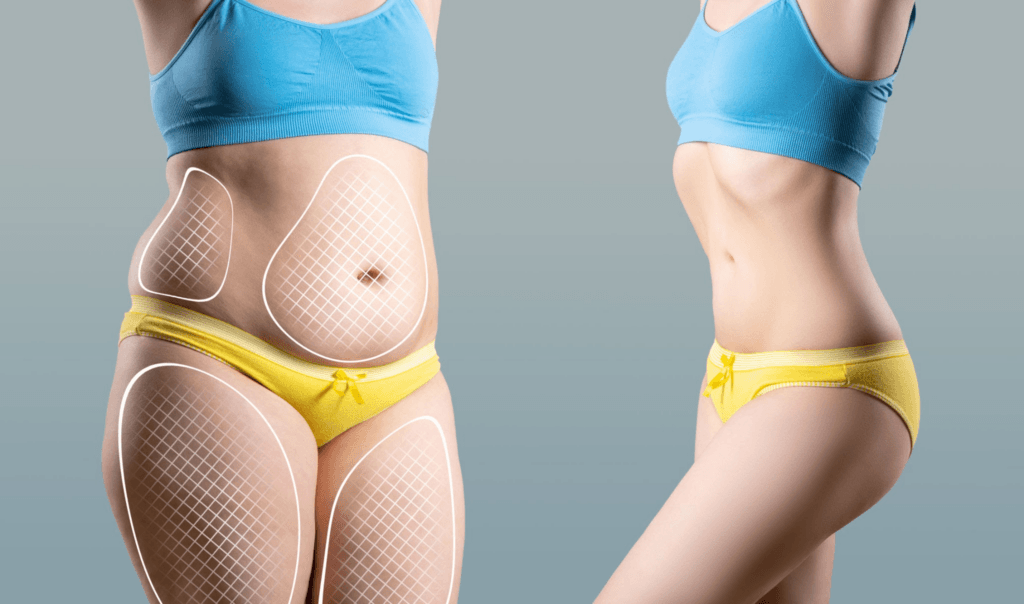Did you know that not all body fat is created equal? The human body contains different types of adipose tissue, each with unique roles in health and metabolism. Understanding the differences between brown and white adipose tissue can empower you to make informed decisions about your health, weight management, and overall well-being.
In this comprehensive guide, we will explore:
- El structural and functional differences between brown and white adipose tissue.
- El critical roles each type of fat plays in metabolic health and disease prevention.
- How lifestyle choices can influence the activity of these tissues.
- Practical tips for activating brown adipose tissue to boost metabolism and improve health.
Let’s dive into the fascinating world of adipose tissue and unlock the secrets to better health!

Tabla de contenido
1. Understanding Adipose Tissue: Basics and Types
1.1. What Is Adipose Tissue?
Adipose tissue is a specialized connective tissue primarily made up of fat cells called adipocytes. It serves as the body’s primary energy reservoir, provides insulation, and acts as an endocrine organ by secreting hormones that regulate metabolism and appetite.
1.2. Types of Adipose Tissue
There are three main types of adipose tissue, each with distinct characteristics and functions:
- White Adipose Tissue (WAT): Primarily responsible for energy storage and hormone regulation.
- Brown Adipose Tissue (BAT): Specialized for heat production and energy expenditure.
- Beige Adipose Tissue: A hybrid type that can switch between white and brown-like characteristics.
| Type | Primary Function | Location in Body |
|---|---|---|
| White Adipose Tissue (WAT) | Energy storage, hormone regulation | Subcutaneous, visceral regions |
| Brown Adipose Tissue (BAT) | Heat production, energy expenditure | Neck, supraclavicular region, around kidneys |
| Beige Adipose Tissue | Hybrid, can switch between white and brown-like states | Within white adipose tissue depots |
Pro Tip: Understanding the types of adipose tissue can help you make informed decisions about diet, exercise, and lifestyle choices to optimize your metabolic health.
2. White Adipose Tissue: Structure, Function, and Health Impact
2.1. Structure and Location
White adipose tissue (WAT) consists of large adipocytes containing a single lipid droplet. It is primarily found in:
- Subcutaneous Fat: Located beneath the skin.
- Visceral Fat: Surrounds internal organs like the liver and intestines.
- Intramuscular Fat: Found within muscle tissues.
2.2. Primary Functions
WAT serves several essential functions in the body:
- Energy Storage: Stores excess energy as triglycerides for future use.
- Thermal Insulation: Provides insulation to maintain body temperature.
- Hormone Secretion: Secretes hormones like leptin and adiponectin, which regulate appetite and metabolism.
2.3. Health Implications of Excess WAT
While WAT is essential for survival, excessive accumulation can lead to health issues:
- Obesity: Linked to an increased risk of metabolic disorders, including type 2 diabetes and cardiovascular disease.
- Insulin Resistance: Excess visceral fat is associated with insulin resistance and metabolic syndrome.
- Inflammation: Chronic low-grade inflammation in WAT can contribute to various chronic diseases.
| Health Issue | Impact of Excess WAT |
|---|---|
| Obesity | Increased risk of metabolic disorders and cardiovascular diseases |
| Insulin Resistance | Associated with type 2 diabetes and metabolic syndrome |
| Inflammation | Chronic inflammation linked to various diseases |
Pro Tip: Maintaining a healthy weight through a balanced diet and regular exercise can help prevent the negative health implications associated with excess white adipose tissue.

3. Brown Adipose Tissue: Structure, Function, and Health Benefits
3.1. Structure and Location
Brown adipose tissue (BAT) consists of smaller adipocytes containing multiple lipid droplets and a high number of mitochondria, giving it a brown color. It is primarily located in:
- Neck and Supraclavicular Region: Common areas in adults.
- Around the Kidneys and Spine: Additional deposits in the thoracic and abdominal regions.
3.2. Primary Functions
BAT plays a unique and critical role in the body:
- Thermogenesis: Generates heat through non-shivering thermogenesis, helping to maintain body temperature in cold environments.
- Energy Expenditure: Burns calories to produce heat, contributing to overall metabolic rate.
- Metabolic Regulation: Influences glucose and lipid metabolism, potentially improving insulin sensitivity.
3.3. Health Benefits of BAT Activation
Activating BAT offers several health benefits:
- Control de peso: Increased BAT activity enhances calorie burning, supporting weight loss and maintenance.
- Improved Insulin Sensitivity: BAT activation is associated with better glucose control and reduced risk of type 2 diabetes.
- Cardiometabolic Health: May reduce the risk of cardiovascular diseases by improving lipid profiles and reducing inflammation.
| Health Benefit | Impact of BAT Activation |
|---|---|
| Weight Management | Enhanced calorie burning and weight loss support |
| Improved Insulin Sensitivity | Better glucose control and reduced diabetes risk |
| Cardiometabolic Health | Reduced risk of cardiovascular diseases |
Pro Tip: Regular exposure to cold temperatures and physical activity can help activate brown adipose tissue, enhancing its metabolic benefits.

4. Key Differences Between Brown and White Adipose Tissue
4.1. Structural Differences
The structural differences between brown and white adipose tissue are significant:
| Característica | White Adipose Tissue (WAT) | Brown Adipose Tissue (BAT) |
|---|---|---|
| Cell Size | Large adipocytes | Smaller adipocytes |
| Lipid Droplets | Single large droplet | Multiple small droplets |
| Mitochondria Content | Few mitochondria | High number of mitochondria |
| Color | White or yellowish | Brown due to iron-rich mitochondria |
4.2. Functional Differences
Brown and white adipose tissue serve distinct roles in the body:
| Function | White Adipose Tissue (WAT) | Brown Adipose Tissue (BAT) |
|---|---|---|
| Primary Role | Energy storage | Heat production and energy expenditure |
| Metabolic Activity | Low metabolic rate | High metabolic rate |
| Response to Cold | Minimal response | Activated by cold exposure |
| Hormone Secretion | Secretes leptin, adiponectin | Secretes factors that enhance metabolic activity |
4.3. Health Implications
The differences between WAT and BAT have significant implications for health:
| Health Aspect | White Adipose Tissue (WAT) | Brown Adipose Tissue (BAT) |
|---|---|---|
| Obesity Risk | Excess WAT linked to obesity and metabolic disorders | BAT activation can help combat obesity |
| Insulin Sensitivity | Excess WAT can lead to insulin resistance | BAT improves insulin sensitivity |
| Cardiometabolic Health | Linked to increased risk of cardiovascular diseases | Supports cardiometabolic health |
Pro Tip: Understanding the differences between WAT and BAT can help you make lifestyle choices that optimize metabolic health and reduce the risk of chronic diseases.

5. Practical Tips for Activating Brown Adipose Tissue
5.1. Cold Exposure
Exposure to cold temperatures is one of the most effective ways to activate brown adipose tissue:
- Cold Showers: Taking cold showers can stimulate BAT activation.
- Cold Environments: Spending time in cooler environments or using cold packs.
- Cryotherapy: Professional cryotherapy sessions can also activate BAT.
5.2. Regular Exercise
Engaging in regular physical activity can enhance the activity of brown adipose tissue:
- Cardiovascular Exercise: Running, cycling, and swimming can boost metabolic rate.
- Strength Training: Building muscle mass can increase overall metabolic activity.
- High-Intensity Interval Training (HIIT): Particularly effective for activating BAT.
5.3. Diet and Nutrition
Certain foods and nutrients can support the activation and function of brown adipose tissue:
- Capsaicin: Found in chili peppers, can stimulate BAT activity.
- Omega-3 Fatty Acids: Found in fatty fish, can enhance metabolic health.
- Polyphenols: Found in berries and green tea, support metabolic function.
5.4. Lifestyle Adjustments
Making certain lifestyle adjustments can further support the activation of brown adipose tissue:
- Adequate Sleep: Poor sleep can negatively impact metabolic health and BAT function.
- Stress Management: Chronic stress can affect adipose tissue function; practice relaxation techniques.
- Hidratación: Staying hydrated supports overall metabolic processes.
Pro Tip: Combining cold exposure, regular exercise, and a balanced diet rich in metabolic-boosting nutrients can maximize the activation and benefits of brown adipose tissue.

Conclusion: Harnessing the Power of Adipose Tissue for Optimal Health
Key Takeaways
- White adipose tissue (WAT) primarily functions in energy storage and can contribute to metabolic disorders when in excess.
- Brown adipose tissue (BAT) generates heat and burns calories, offering significant metabolic benefits.
- Activating BAT through cold exposure, exercise, and diet can enhance metabolic health and support weight management.
- Understanding the differences between WAT and BAT can help you make informed decisions about your health and lifestyle.
Next Steps
Ready to optimize your health by harnessing the power of adipose tissue? Here’s what you can do next:
- Incorporate cold exposure into your routine through cold showers or cryotherapy sessions.
- Engage in regular physical activity, including cardiovascular and strength training exercises.
- Adopt a balanced diet rich in nutrients that support metabolic health, such as capsaicin, omega-3 fatty acids, and polyphenols.
- Consult with a healthcare professional or nutritionist to develop a personalized plan for optimizing your adipose tissue function.
En Equipo de cirugía, we are dedicated to helping you achieve optimal health and well-being. Whether you’re looking to enhance your metabolic health or explore advanced treatments, our team of experts is here to support you. Contact us today to learn more about how we can assist you on your health journey!
Preguntas frecuentes (FAQ)
1. What is the main difference between white and brown adipose tissue?
The main difference lies in their functions: white adipose tissue (WAT) primarily stores energy, while brown adipose tissue (BAT) generates heat and burns calories through thermogenesis.
2. Where is brown adipose tissue located in the body?
Brown adipose tissue is primarily located in the neck, supraclavicular region, and around the kidneys and spine. It is more prevalent in newborns but can also be found in adults.
3. How can I activate brown adipose tissue?
You can activate brown adipose tissue through cold exposure, regular exercise, and certain dietary components like capsaicin and omega-3 fatty acids.
4. What are the health benefits of brown adipose tissue?
Activating brown adipose tissue offers several health benefits, including enhanced calorie burning, improved insulin sensitivity, and better cardiometabolic health.
5. Can white adipose tissue be converted to brown adipose tissue?
While white adipose tissue cannot be directly converted to brown adipose tissue, certain conditions like cold exposure and exercise can induce the formation of beige adipose tissue, which has characteristics of both white and brown adipose tissue.
6. What role does beige adipose tissue play in the body?
Beige adipose tissue acts as a hybrid, capable of switching to a brown-like state under certain conditions. It contributes to thermogenesis and metabolic flexibility, supporting overall metabolic health.
7. How does excess white adipose tissue affect health?
Excess white adipose tissue is linked to health issues such as obesity, insulin resistance, and chronic inflammation, increasing the risk of metabolic disorders and cardiovascular diseases.
8. What lifestyle changes can help optimize adipose tissue function?
To optimize adipose tissue function, consider incorporating regular exercise, a balanced diet, cold exposure, adequate sleep, and stress management into your lifestyle.
Nuestros cirujanos y profesionales afiliados
At Surgyteam, we are proud to collaborate with a distinguished team of medical professionals, each bringing a wealth of expertise and a commitment to patient-centered care.
- Dr. Mehmet Fatih Okyay (Dr. MFO): Plastic, Reconstructive and Aesthetic Surgery Specialist. Co-founder of Surgyteam. FEBOPRAS certified. (https://www.dr-mfo.com/)
- Dr. Selçuk Yılmaz: Plastic, Reconstructive and Aesthetic Surgery Specialist. (https://drselcukyilmaz.com)
- Dr. Ebru Okyay: Dermatology Specialist. (https://drebruokyay.com/)
- Dr. Mustafa Keleş: Aesthetic, Plastic and Reconstructive Surgery Specialist. (https://www.medstar.com.tr/doktorlar/mustafa-keles/)
- Dr. Boray Yücel: Plastic, Reconstructive and Aesthetic Surgery Specialist. (https://borayucel.com/)
- Dr. Sibel Atalay: Plastic, Reconstructive and Aesthetic Surgery Specialist. Clinic with International Health Tourism Authorization Certificate. (https://www.sibelatalay.com.tr/)
- Dr. Mert Meral: Plastic, Reconstructive and Aesthetic Surgery Specialist. EBOPRAS certified. (https://mertmeral.com/)
To learn more about Surgyteam and how we can assist you, please visit our website:
https://surgyteam.com/
Disclaimer: This blog post is intended for informational purposes only and does not constitute medical advice. Costs are estimates and can vary. Always consult with a qualified medical professional for personalized advice and treatment.



